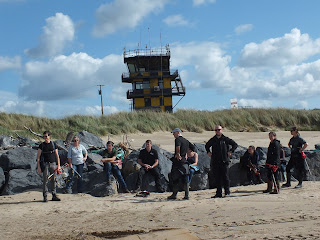Well if you are, and to be honest if you read this blog then you probably do.
With the seasons changing albeit erratically at the moment but with a hint of more typical autumn weather due in the next week now may be time to think about making sure that you are prepared for the duties ahead.
Lets not take the fun out of feeding the birds, but seriously regular feeding can be the lifeline for our garden birds. Once you start feeding for the winter keep it going, it can be expensive so a little and often will benefit the birds and enhance your pleasure of watching the antics of the regular visitors. Don't forget fresh water will be appreciated for drinking and bathing.
Choice of feed is important, avoid bread, buy the best you can afford, if using fat balls only buy the ones in nets if you are prepared to REMOVE THE NET.
There are a number of diseases and viruses around which can affect birds, the work of these at the moment is Trichomoniasis, (Trich') Greenfinches are reported most frequently, but potentially any bird can be infected, including pigeons and doves and some birds of prey. The trichomonad parasite lives in the upper digestive tract of the bird, and its actions progressively block the bird’s throat making it unable to swallow food, thus killing it by starvation.
 |
| Greenfinch succumbing to Trich' |
Trichomoniasis causes lesions in the throat of the infected bird, which makes it progressively harder for the bird to swallow its food, and eventually breathe. Birds will also show signs of lethargy and fluffed up plumage, drooling saliva and regurgitated food. Affected birds frequently have matted wet plumage around the face and beak and uneaten food in and around the beak.
 |
| Chaffinches showing advanced Papilloma |
Don't let these issues put you off there are far more positives than negatives from feeding the birds through the autumn and winter.































